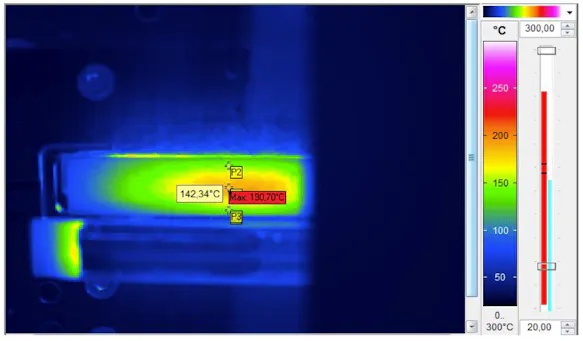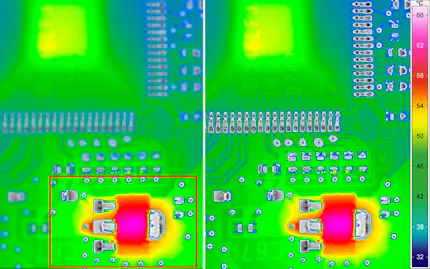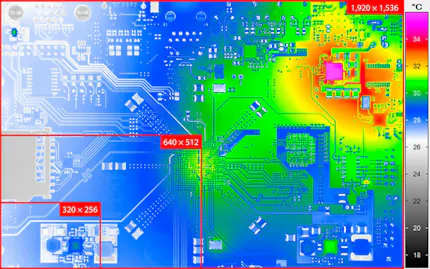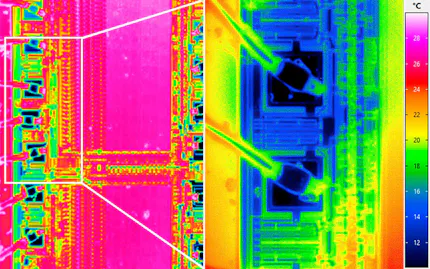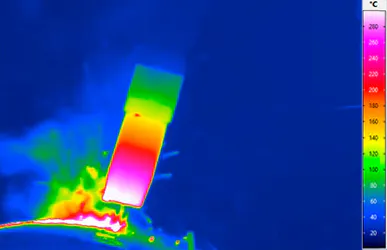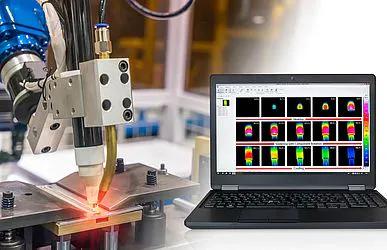Thermal Imaging in Plastics Engineering
A core topic of modern materials research is the research on plastics as a versatile material for various technological applications. Quite often, industrial applications are developed from academic basic research.
At the Faculty of Mechanical Engineering at the University of Paderborn, Kunststofftechnik Paderborn (KTP) works intensively on this topic using a VarioCAM® HD for this purpose.
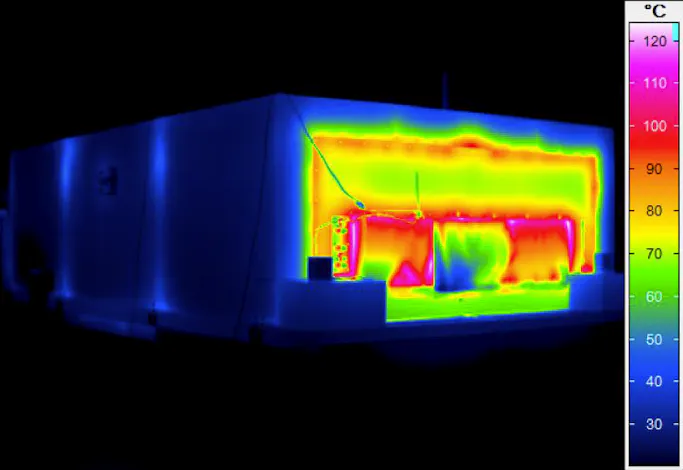
The KTP researches and develops processing techniques and simulation programmes in the field of plastics and rubbers for extrusion, injection moulding, welding, and bonding technologies. The institute's various laboratories, equipped with the latest technology, provide various possibilities to carry out comprehensive material tests and to offer these to cooperation partners in industry.
For several years, KTP has been using a VarioCAM® HD for its materials research. The infrared camera is used in the following four research areas:
Quality monitoring in laser transmission welding
Reduction of the energy consumption of shrink tunnels
Thermal imaging in the field of fibre composite materials
Targeted heating of organic sheets by means of infrared radiation
InfraTec Solution
University of Paderborn, Faculty of Mechanical Engineering;
Kunststofftechnik Paderborn (KTP)
Dr. Kim Westhues
Thermal imaging system:
VarioCAM® HD
Quality Monitoring During Laser Transmission Welding
In this joining process, components are welded together, one of which is transparent and one of which absorbs the laser radiation used for joining. This radiation first penetrates the transparent joining partner undisturbed and leads to heating and melting in the absorbing joining partner. At the same time, heat flows into the transparent joining partner, which is firmly pressed against the joining pressure. This also melts the transparent partner, which finally leads to the welding of both components.
For monitoring and evaluating the qualitative execution of the welding process, thermal imaging is suitable as a non-contact temperature measurement method. A high-precision infrared camera such as the VarioCAM® HD allows the detection of thermal damage and hotspots in critical component areas.
Given the accuracy requirements, the measurement task is very demanding. Another complicating factor is that the selected measurement method must also function on curved workpieces – for example, it must be able to track a three-dimensional welding process. In addition to its high image resolution of (1,024 × 768) IR pixels, the VarioCAM® HD can also score points here with its EverSharp function. Here, a thermogram series is recorded with different focus settings and then combined into a consistently sharp thermogram. The high spatial resolution of the camera system used also allows exact measurement of the workpiece temperature directly next to the welding area.
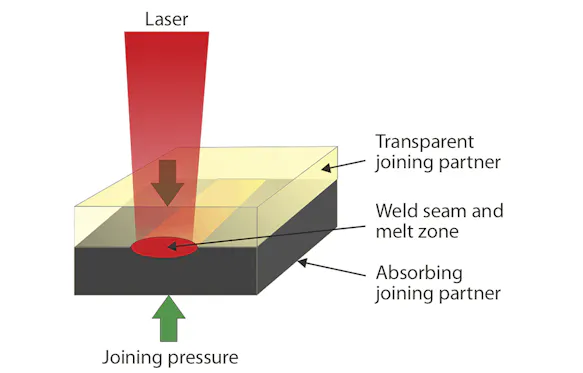
Reduction of the Energy Consumption of Shrink Tunnels
The current claim is to reduce the use of plastic films as packaging material. However, their use is indispensable for some shipping forms or material properties. When using shrink film for packaging, for example, the fact that heating the film fixes fewer stable goods to pallets in such a way that they can be moved and loaded quickly and easily is exploited. In this packaging process, the respective goods are passed through a thermally insulated, heated tunnel and the film is heated according to the process. Depending on the goods to be packaged or the batch size, a considerable volume of space has to be heated. In times of rising energy costs, the energetic optimisation of the process is therefore a necessity.
As part of a project funded by the Central Innovation Programme for SMEs (ZIM) of the German Federal Ministry of Economics and Technology, KTP has developed a prototype that, due to thermal optimisation, can be operated with 50 % less energy than current commercial shrink tunnels. These used to require 37 kW – after making appropriate adjustments to the prototype, the energy input could be reduced to 17 kW. The decisive factors here were the thermographic analyses of the transport rollers (as the main source of heat loss) as well as the detection of thermal bridges and the measurements of device surface temperatures. For these analyses, the high measurement accuracy and measurement stability of a VarioCAM® HD are of great benefit.
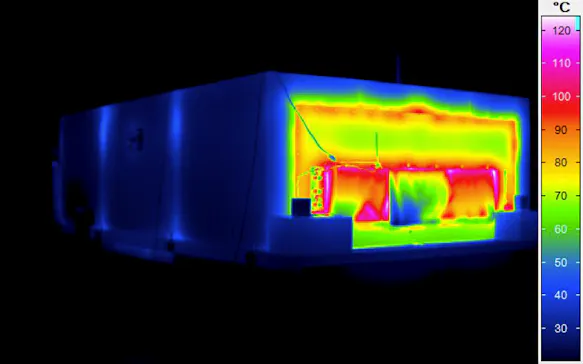
In the further course of the project, aspects of process automation and product-specific flexibility were also considered in order to enable series production of the optimised shrink tunnels via the prototype.
Thermal Imaging in the Field of Fibre Composite Materials
Fibre composite materials have become indispensable in the development of modern, highly resilient and at the same time lightweight parts and components. They are used in the fields of aerospace, vehicle construction and wind turbines, among others. Therefore, analyses of stresses and strains in connection with temperatures, ambient media and mechanical stress factors are indispensable in materials development. Non-destructive testing (NDT) is also a core topic for the KTP here, where the benefits of passive and active thermal imaging can be used profitably under certain circumstances.
As stable as composites may be constructed, as diverse are the possible damages that are often located inside the material and therefore require sophisticated measurement solutions. A VarioCAM® HD in combination with the InfraTec software IRBIS® active provides valuable services for this. Flat components are actively excited with pulsed light sources, which provides a defined heat flow within the component. This process is controlled with the help of the IRBIS® active software. Within the scope of the image evaluation of heat compensation processes, flaws or defects are then made visible.
At the KTP, specific analyses were carried out on CFRP components that had been exposed to hailstorms, among other things. During the visual analysis, the individual defects on the components were not perceptible. However, with the help of active thermography, clear damage could be detected.
The results of aging and weather influences on the rotor blades of wind turbines could also be demonstrated with the help of active thermal imaging. This is a topic that will have to be analysed frequently in the coming years in view of the large number of installed wind turbines.
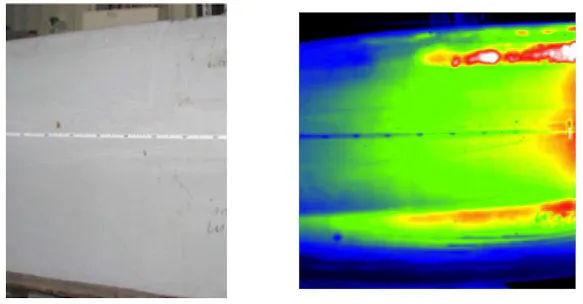
Targeted Heating of Organic Sheets by Means of Infrared Radiation
So-called organic sheets are fibre composite semi-finished products that are used when complex shaped workpieces or components have to be produced in large quantities and are used in vehicle construction. In addition to the mechanical forming process, the product shape can be achieved very precisely and reproducibly, even in series processes, through targeted, location-dependent heating by means of an infrared radiator.
In the context of this KTP research project, it turned out that the positioning of the infrared radiator was very critical. The same applies to the alignment of the emitter field. Both components are important for homogeneous material heating. Here, too, an infrared camera of the VarioCAM® series proves its efficiency as a measurement instrument in interaction with the IRBIS® software. The diverse measurement field settings and, if necessary, also additionally required algorithms for emissivity correction allow precise evaluations of the infrared emitters used.
